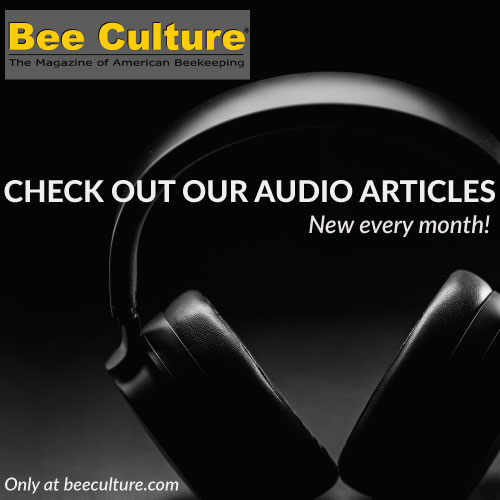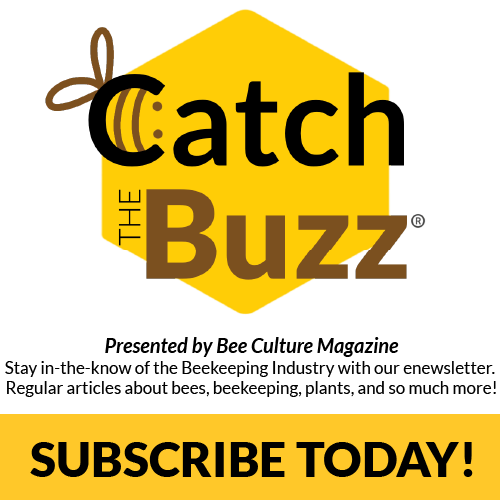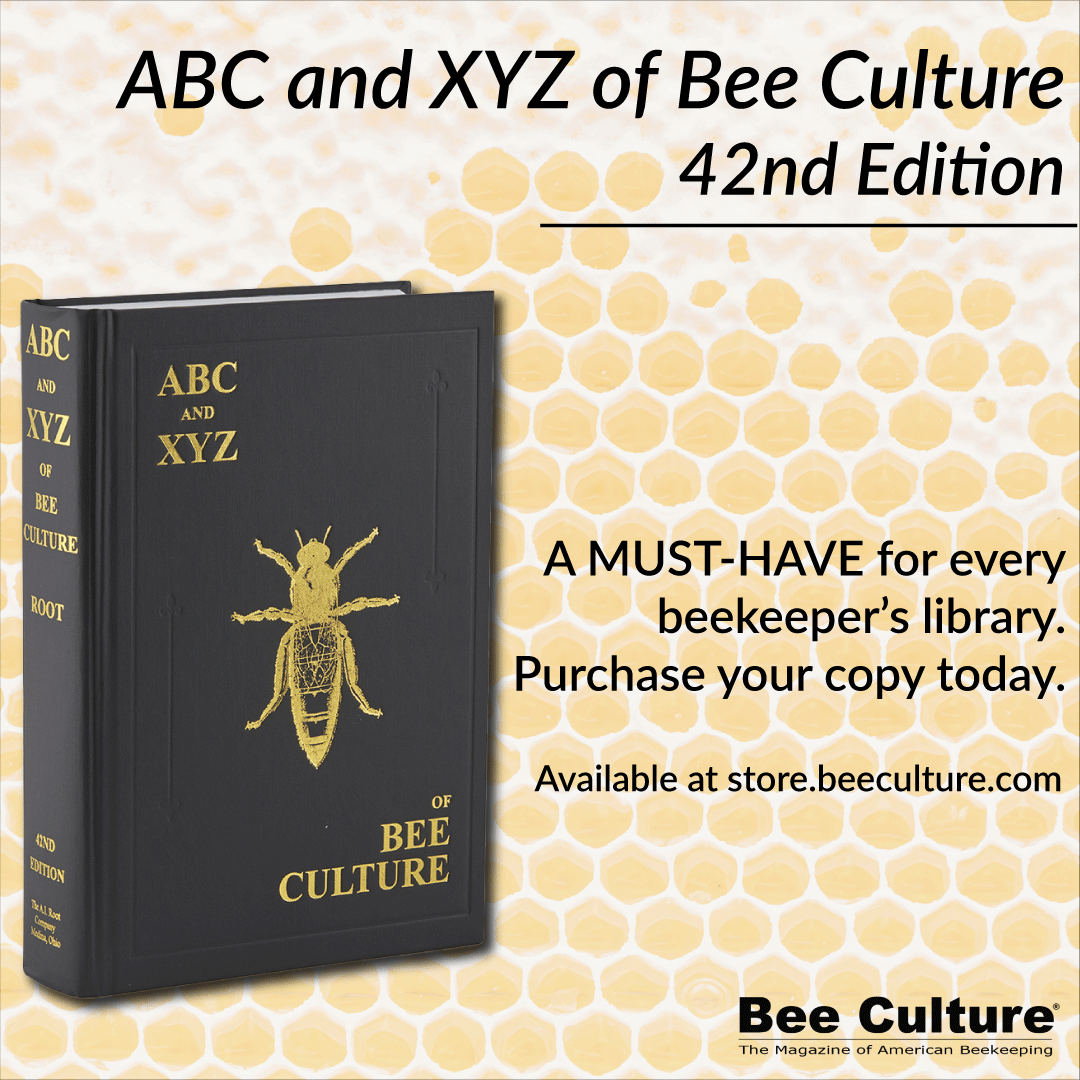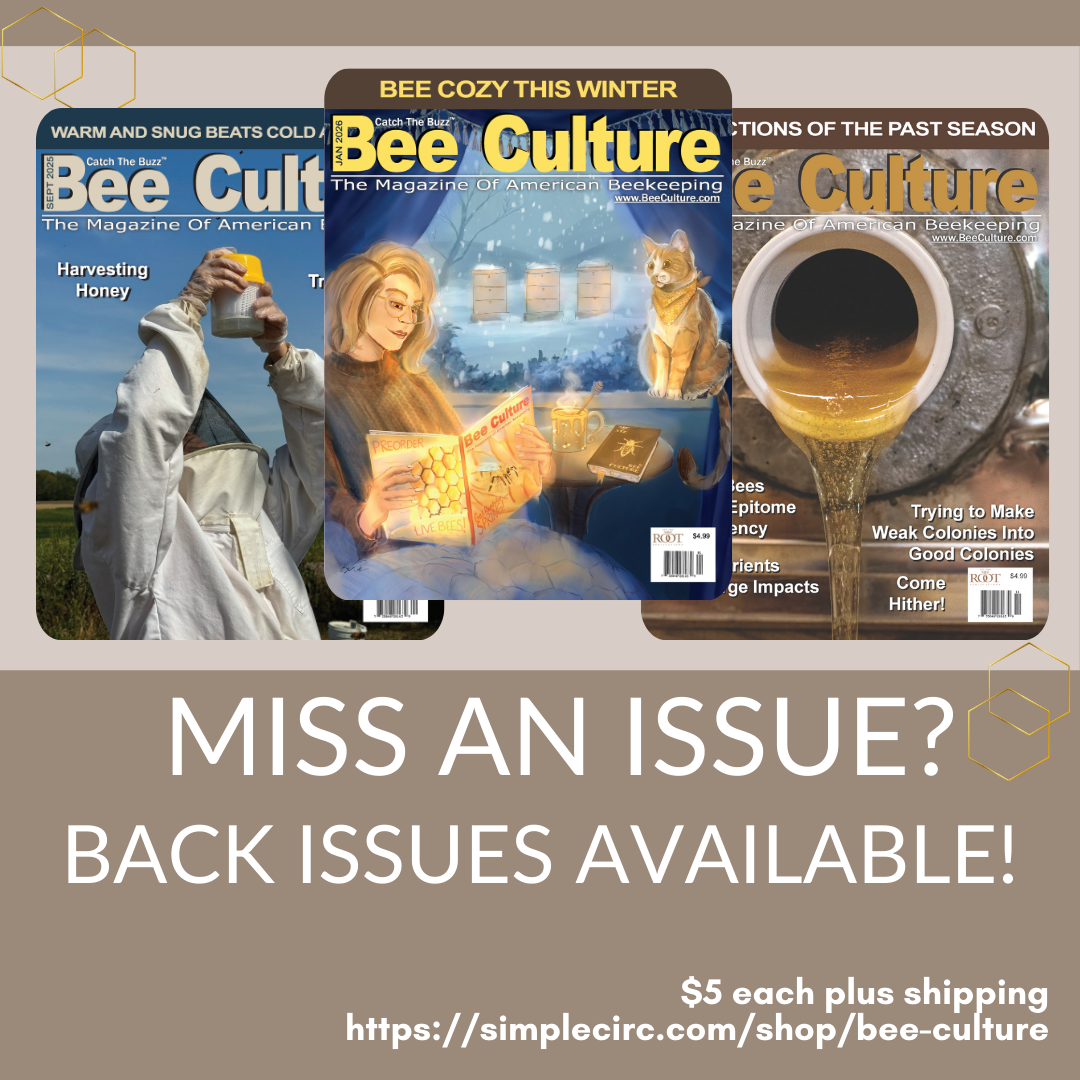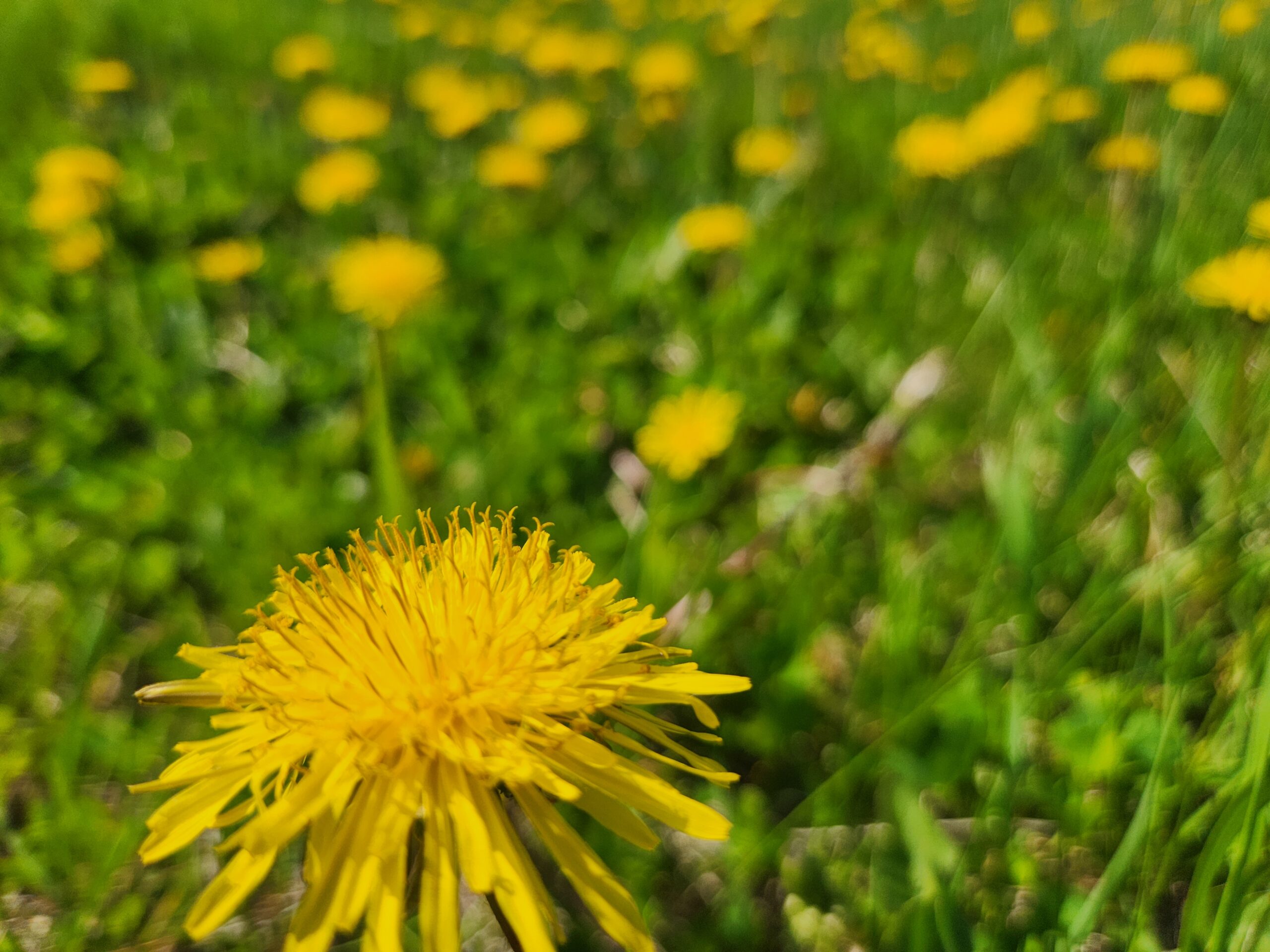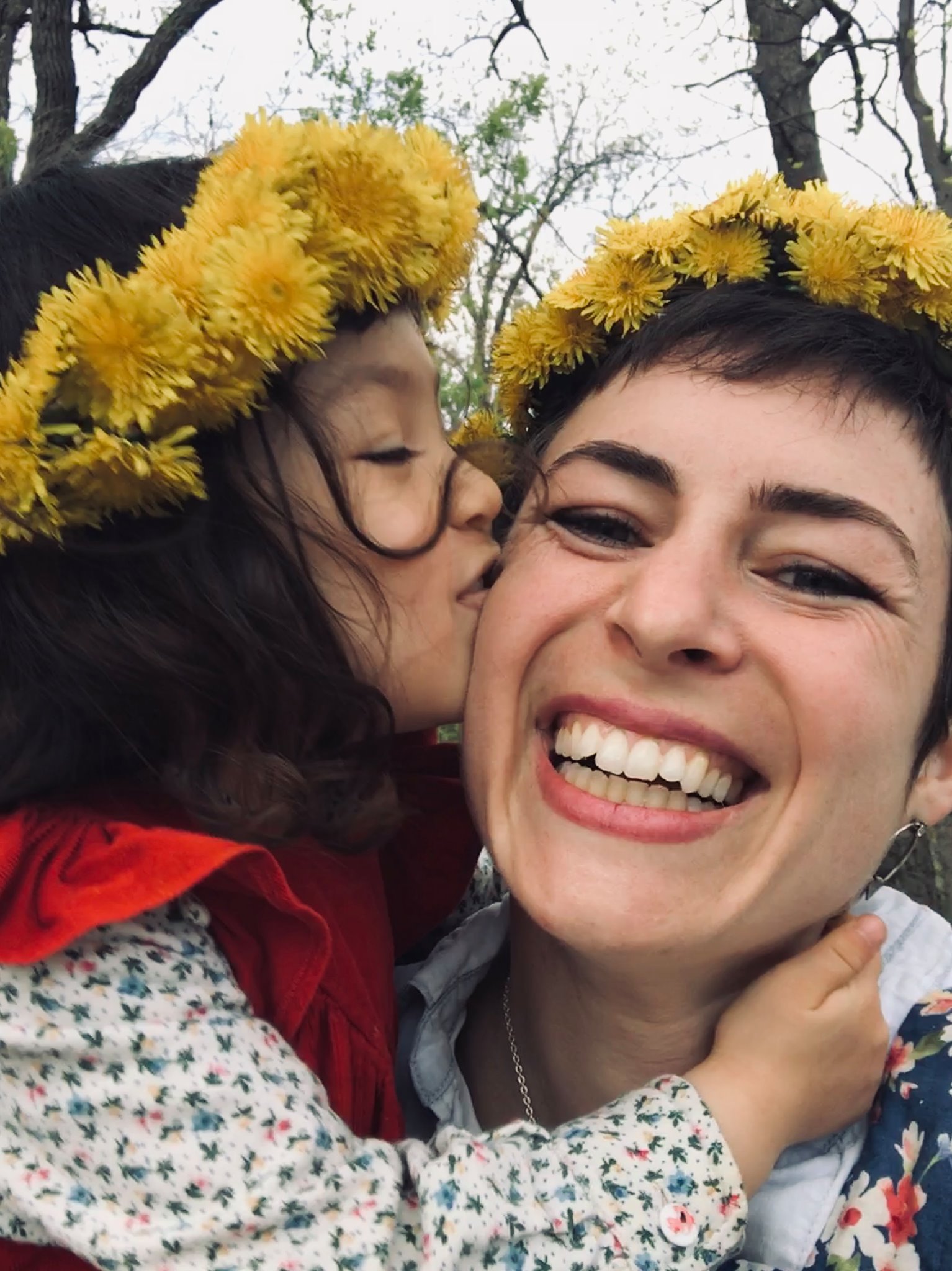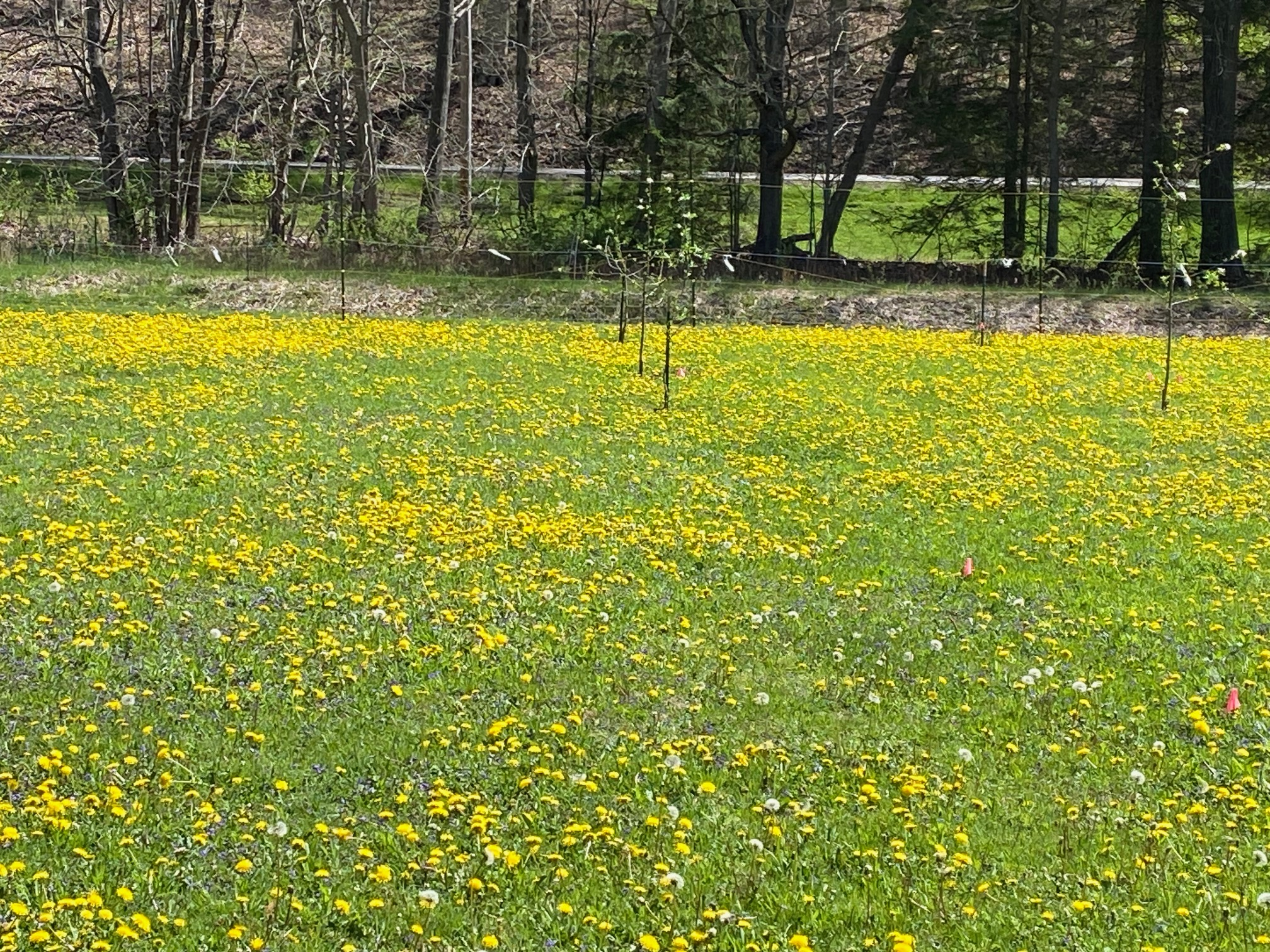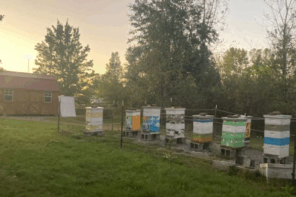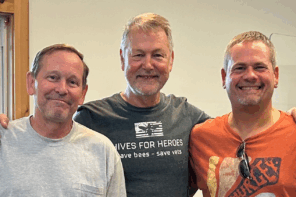Click Here if you listened. We’d love to know what you think. There is even a spot for feedback!
Read along below!
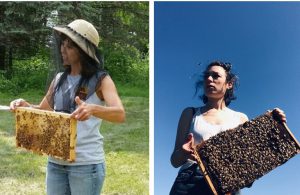
Becky Masterman earned a PhD in entomology at the University of Minnesota and is currently a host for the Beekeeping Today Podcast. Bridget Mendel joined the Bee Squad in 2013 and led the program from 2020 to 2023. Bridget holds a B.A. from Northwestern University and an M.F.A. from the University of Minnesota. Photos of Becky (left) and Bridget (right) looking for their respective hives. If you would like to contact the authors about your lovely lawns, please send an email to mindingyourbeesandcues@gmail.com.
Minding Your Bees and Cues
In Praise of the Dandelion
By: Becky Masterman & Bridget Mendel
Praise the dandelion! Friendly organizer against green lawns! Protester of perfection! Passionate propagator of yellow orbs. We do admire this tap-rooted trickster whose massive pop-up lawn parties are beloved by bees. And beloved by children who, drawn to their fluffy yellow heads, pick them and braid them and blow their seeds for wishes until their hands are green and sticky from handling the milky stems.
And no one gets hurt. In fact, dandelions, native to Eurasia, are extremely healthy. High in vitamins A, B, C and D as well as iron, potassium and zinc, they’ve long been infused for teas, tinctures, as well as cooked and eaten! Every part of the flower is edible, including the roots, leaves and flowers. Sauteed with olive oil and garlic on a Spring evening? Heaven.
But all of this delight is not so fun when herbicides are involved. And, sorry for the all caps but WHY? Herbicides are bad for bees, kids and dogs. They are death for dandelions. So why, dear neighbor, dost thou keepest thy lawn so unnaturally green?
In general, we see a lovely trend towards letting lawn flowers bloom. It appears we are moving in the right direction when it comes to lawn care that supports pollinators. It’s a nice way to signal to your neighbors, “Given the current political chaos, I do seek areas of my life where I feel I have some control, but I’m not silly enough to take it out on my dandelions.”
So you’re that one guy keeping it green when the rest of the neighborhood has opted for a “free to be you and me” aesthetic. You are one impressive individual! Tenacious as a dandelion yourself. You’re not just mowing down the yellow lion’s teeth, but you’re getting at the root. And each root grows from a seed. And each dandelion plant sends out about 15,000 seeds, and each of those 15,000 seeds is individually parachuted by about 100 bristles into the wind and right over that fence and into your emerald fields.
We’d rather our kids and dogs risked an occasional bee sting than play on herbicide-laced grass. We’d rather the bees had their fill of dandelion pollen, the better to stain their Spring combs yellow with. We’re pro-weed. We don’t like to tell people where to spend their money (more bee friendly flowers) but we do like telling people what we think (plant more bee friendly flowers). Especially for those who are willing to invest money in lawns, we think there are better investments than herbicides and fungicides. Like lawn chairs and bocce ball and bee food.
Do you agree with us? We suspect your lawns are bursting with blooms. We know that you know who the pesticide loving neighbor (s) on your block are. It is hard to not take the cosmetic use of pesticides personally these days. While cosmetic pesticide use doesn’t start and end with the dandelions in our yards, the chemical warfare playing out in yards overall is astounding. Honey bees, other pollinators, wildlife and humans are collateral damage.
The numbers are big when it comes to just how much spraying homeowners are doing in the U.S. In 2012, the EPA reported the total U.S. pesticide use in the home and garden sector to be 59 million lb with herbicides accounting for 28 million lb of that number. Agricultural use was reported to be 899 million lb while the industrial/commercial/industry sector reported used 48 million lb of pesticides https://www.epa.gov/sites/default/files/2017-01/documents/pesticides-industry-sales-usage-2016_0.pdf
Resources
If you want a sobering history of this chemical war, we suggest reading The War on Weeds by Laura J. Martin (https://www.noemamag.com/the-war-on-weeds/). This easy to read, well written article is not easy to read. But you will be better informed if you take the time to learn about the origin of biocides and our journey through the chemical use and their environmental impacts.
The Pollinator Stewardship Council has gathered beekeeper pesticide stories on this page: https://www.pollinatorstewardship.org/profiles-of-the-modern-beekeeper
Luckily, you don’t need to look far to find organized efforts to decrease pesticide use. Here is an interesting movement:
Non Toxic Communities (https://www.nontoxiccommunities.com/our-history.html)
This large scale approach to healthier communities is good for people and the pollinators they love. You can check to see if any cities in your state have joined the movement and connect with them for direction if willing to take on the effort.
Our neighbors to the north have also worked to make their environment healthier. Again, don’t expect their myths vs reality information sharing approach to have a good impact, but you will probably be better informed after reading it. https://pesticidefreeyeg.com/2022/03/28/cosmetic-pesticide-use-5-myths-vs-reality/
We want to end with a fun recommendation about changing lawn culture. The University of Minnesota Bee Lab released a video titled Lawn Trends 2022 (Bridget Mendel and Anne Turnham) that we think will make you smile and sharing it might just save a lawn.
Lawn Trends 2022 https://www.youtube.com/watch?v=DIbD0Y7_0Rg

